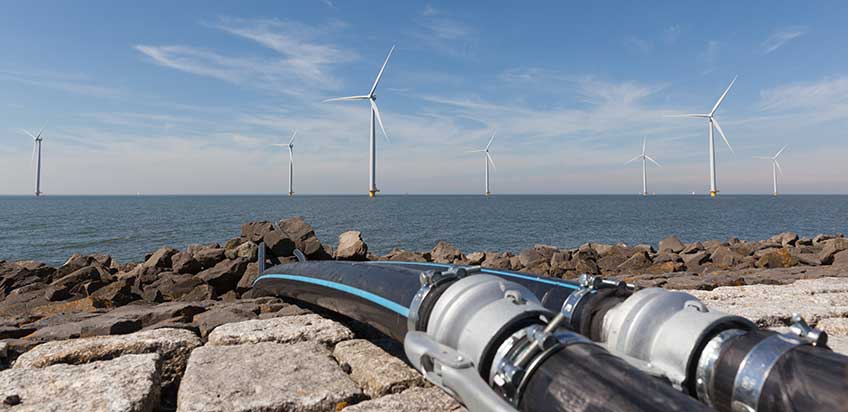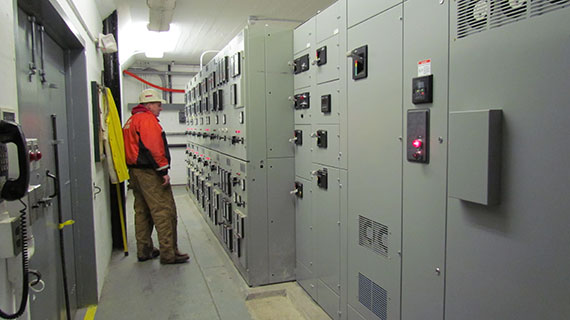news
Design and Analysis of a Bidirectional DC-DC Converter for Energy Storage Systems
Author: ZYG Power Module Time: 2023-6-19
Energy storage systems (ESS) have been gaining popularity in recent years due to the increased need for renewable energy integration and grid stabilization. One of the key components of an ESS is the bidirectional DC-DC converter, which is responsible for converting the DC voltage of the battery to the appropriate voltage level for the load or grid, and vice versa. In this article, we will discuss the design and analysis of a bidirectional DC-DC converter for energy storage systems.
Design Considerations:
The design of a bidirectional DC-DC converter for ESS involves several considerations. Some of the key design parameters are:
1. Power rating: The power rating of the converter should be chosen to match the power requirements of the load or grid.
2. Voltage rating: The voltage rating of the converter should be chosen to match the voltage level of the battery and the load or grid.
3. Efficiency: The converter should be designed to operate at high efficiency to minimize power losses.
4. Size and weight: The converter should be designed to be compact and lightweight to reduce the overall size and weight of the ESS.
5. Control scheme: The converter should be designed to operate under different control schemes, such as voltage or current control, depending on the application.
6. Protection features: The converter should be designed with protection features to prevent damage from over-voltage, over-current, or over-temperature conditions.
Design of the Bidirectional DC-DC Converter:
The bidirectional DC-DC converter consists of two stages: the boost stage and the buck stage. The boost stage is responsible for stepping up the voltage of the battery to the desired voltage level for the load or grid, while the buck stage is responsible for stepping down the voltage from the load or grid to the battery voltage level. The overall operation of the converter is controlled by a digital signal processor (DSP) which implements a pulse-width modulation (PWM) algorithm.
The boost stage consists of a boost inductor, a boost switch, and a diode. During the boost mode, the boost switch is turned on, and the inductor stores energy from the battery. When the switch is turned off, the energy stored in the inductor is transferred to the load or grid through the diode. The output voltage of the boost stage is given by:
Vout = Vin x (1 + D)
where Vin is the input voltage from the battery, D is the duty cycle of the PWM signal, and Vout is the output voltage.
The buck stage consists of a buck inductor, a buck switch, and a diode. During the buck mode, the buck switch is turned on, and the inductor stores energy from the load or grid. When the switch is turned off, the energy stored in the inductor is transferred back to the battery through the diode. The output voltage of the buck stage is given by:
Vout = Vin x (1 – D)
where Vin is the input voltage from the load or grid, D is the duty cycle of the PWM signal, and Vout is the output voltage.

Simulation and Analysis:
To evaluate the performance of the bidirectional DC-DC converter, we conducted simulations using MATLAB Simulink. The converter was designed to operate at a power rating of 5 kW and a voltage rating of 400 V. The efficiency of the converter was evaluated under different operating conditions, such as varying load and battery voltages.
The simulation results showed that the converter achieved an efficiency of over 95% under most operating conditions. The converter was also found to be stable under different control schemes, such as voltage and current control. Furthermore, the converter was found to be robust against over-voltage, over-current, and over-temperature conditions due to the implemented protection features.
Conclusion:
In this article, we discussed the design and analysis of a bidirectional DC-DC converter for energy storage systems. The converter was designed to operate at a power rating of 5 kW and a voltage rating of 400 V. The simulation results showed that the converter achieved high efficiency and was stable under different operating conditions. The implemented protection features also ensured robust operation of the converter. The designed bidirectional DC-DC converter can be used in various energy storage applications, such as renewable energy integration and grid stabilization.
Precedente: AC to DC Converter Module – 12V Output
Prossimo: 120V AC to 12V DC Converter: Transforming Voltage for Efficient Power Supply
informazioni rilevanti
-
2023-9-12
AC Power Supply Module supplier: Ensuring Reliable and Efficient Electrical Energy Conversion
Introduction Electrical energy has become an indispensable part of our lives. We rely on it to power our homes, businesses, and industries. To meet the ever-increasing demand for electricity, it is essential to have a reliable and efficient AC power supply module. This article will delve into the importance of such a module and how it ensures the conversion of electrical energy in a reliable and efficient manner. Importance of AC Power Supply Module An AC power supply module is a device that converts alternating current (AC) from the main power source into direct current (DC) that can be used to power electronic devices. It plays a crucial role in ensuring the uninterrupted supply of electricity and protecting devices from...
Visualizza dettagli -
2023-6-15
AC to DC Converter Available Now in Store
Looking for a reliable solution to convert AC power to DC power? Look no further, because our store now has AC to DC converters available for purchase. Whether you're an electrician, a technician, or just someone looking to power your devices efficiently, our AC to DC converters are the perfect solution for your needs. Our AC to DC converters are designed to be compact and easy to use, making them ideal for a wide range of applications. They are built with high-quality materials and are designed to be energy-efficient, ensuring that you get the most out of your power supply. With our AC to DC converters, you can power a wide range of devices, including audio equipment, computers, and much...
Visualizza dettagli -
2023-6-17
Car Outlet Converter: The Ultimate Solution for Powering Your Devices on the Go
In today's fast-paced world, staying connected is more important than ever. Whether you're on a road trip or simply commuting to work, having access to power for your devices is essential. This is where a car outlet converter comes in handy. A car outlet converter is a device that allows you to plug in and power your electronic devices while on the go. With a car outlet converter, you can charge your phone, tablet, laptop, or any other device that requires power. This makes it an essential tool for anyone who spends a lot of time in their car. One of the biggest advantages of a car outlet converter is that it provides a constant power source. This means that...
Visualizza dettagli -
2023-10-13
Introducing the Dual Power Supply Module: Enhancing Efficiency and Reliability
Efficiency and reliability are two crucial factors that determine the success of any electronic device. Whether it is a smartphone, a computer, or an industrial equipment, uninterrupted power supply plays a pivotal role in ensuring their smooth functioning. To address this need, we are thrilled to introduce the Dual Power Supply Module, a revolutionary solution that enhances both efficiency and reliability. The Dual Power Supply Module is a cutting-edge device that allows electronic devices to operate using two power sources simultaneously. It is equipped with state-of-the-art technology and advanced features that ensure a seamless transition between the primary and secondary power sources. This module offers several advantages over traditional single-source power supply systems, making it an ideal choice for various...
Visualizza dettagli -
2023-6-10
AC DC Converter AES Series: The Ultimate Solution for Power Conversion Needs
Power conversion is an essential requirement in almost all electronic devices. The energy source that powers electronic devices is generally in the form of alternating current (AC), whereas most electronic devices require direct current (DC) for their operation. In this context, AC DC converters play a crucial role in converting the AC input voltage into a stable DC voltage, which can be used to power electronic devices. The AES Series of AC DC converters is an excellent solution for all power conversion needs. These converters are designed to provide a stable and reliable DC output voltage, even under varying AC input voltage conditions. They are highly efficient and have several advantages over other types of power converters available in the...
Visualizza dettagli -
2023-7-31
High quality Medical Power Series: Empowering Healthcare through Innovative Solutions
The field of healthcare has always been driven by innovative solutions that aim to improve patient outcomes, enhance access to care, and increase the efficiency of healthcare systems. In recent years, the emergence of the Medical Power Series has revolutionized the way healthcare professionals deliver care and patients receive treatment. This series of innovative solutions has empowered healthcare providers by equipping them with advanced tools and technologies that enable them to deliver high-quality care and make informed decisions. One of the key components of the Medical Power Series is the integration of electronic medical records (EMRs) into healthcare systems. EMRs have replaced the traditional paper-based medical records, allowing healthcare providers to access patient information in a secure and efficient manner....
Visualizza dettagli


















